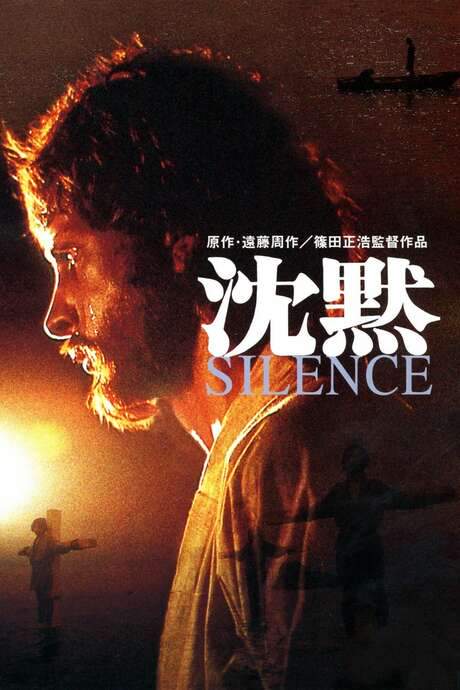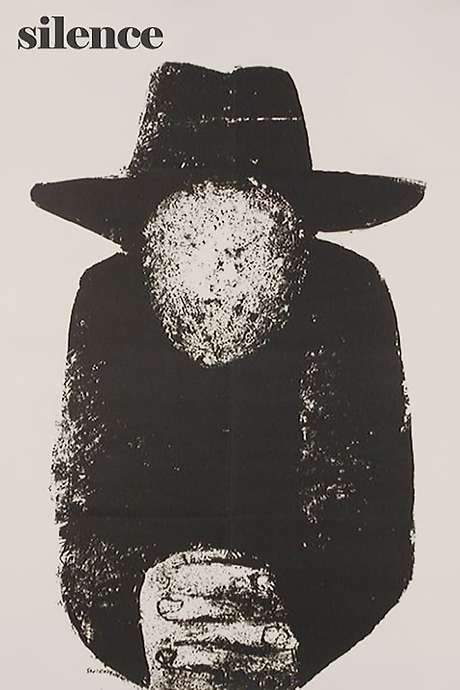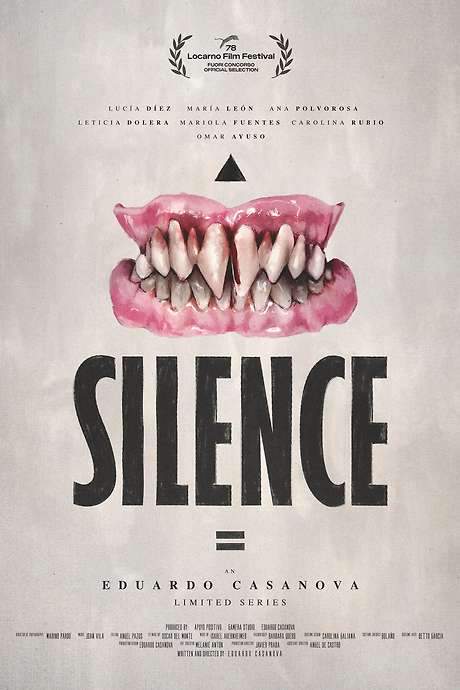Warning: spoilers below!
Haven’t seen Silence yet? This summary contains major spoilers. Bookmark the page, watch the movie, and come back for the full breakdown. If you're ready, scroll on and relive the story!
Silence (1971) – Full Plot Summary & Ending Explained
Read the complete plot breakdown of Silence (1971), including all key story events, major twists, and the ending explained in detail. Discover what really happened—and what it all means.
In the 17th century, two Portuguese Jesuit priests, Rodrigo and Francisco Garrpe, undertake a perilous journey to Japan to spread Christianity despite a formal crackdown on the faith. They are determined to rendezvous with their mentor, Cristóvão Ferreira, whom they have not heard from in five years and who they believe may be imprisoned. One priest exudes a self-assured warmth, while the other moves with caution; together they navigate a land where their beliefs are met with warning glances and painful restraint. Their arrival is met with a mixture of awe and fear from a community of persecuted Japanese Christians who long for support, comfort, and the familiar rituals of home, and the priests find themselves pulled between duty, hope, and the harsh realities of their hosts’ fear.
They head toward a coastal village where they first encounter a fisherman named Kichijiro, who had helped smuggle them into the country. The welcome is tangled with danger, as a detachment of Japanese officials and samurai descends in search of the two priests. With most of their flock already scattered, tortured, or forced to renounce their faith, the priests decide to retreat, only to be separated in the chaos that follows. The man named Kichijiro reconnects with Rodrigo, admitting his own frailties and revealing that his family was slaughtered for practicing Christianity. The weight of betrayal rises when Nagasaki’s magistrate, Inoue, and his men confront the priests, and money is tossed like a grim symbol—three hundred pieces of silver given to Kichijiro, a gesture that echoes old betrayals and stirs guilt later shared with a prostitute seeking solace.
The authorities haul Rodrigo to Nagasaki for a formal trial, and the mood darkens as a public humiliation unfolds: a Christian samurai family is forced to renounce their faith and endure degradation, while Kiku—the wife in the marriage—recants under pressure, and the husband is executed for defiance. Kichijiro, now burdened by guilt for his treachery, slips back into the cell and begs Rodrigo’s forgiveness, explaining that shame from renouncing faith has driven his actions more than fear itself.
In a private exchange, Inoue, through his interpreter, presses Rodrigo to consider the fate of Christianity in Japan. He argues that the Church is unwanted in the country, likening the Catholic faith to a disruptive concubine that unsettles the conscience of the state. Rodrigo counters with a vision of universality—the belief that truth transcends borders and that the happiness of love between a couple mirrors a larger harmony that the state should not sever. The two men debate, each stubborn but occasionally swayed by the other’s convictions. Yet, bound by the shogunal law, Inoue maintains the ban on Christianity.
Soon after, Rodrigo learns that Garupe has been taken prisoner alongside his Japanese companions. The interpreter reveals a grim choice: if Rodrigo refuses to witness Garupe apostatize, the hidden converts will face death. Garupe’s peers are drowned one by one as he refuses to yield; he resists, frees himself, and plunges into the sea to save others, only to be pierced by spears and to drown. The sacrifice is profound and haunting, underscoring the conflict between faith, loyalty, and survival.
Later, Rodrigo is brought to a Buddhist temple where he meets Inoue’s confidant, known as Sawano, who turns out to be Ferreira under a different name. Ferreira—now an apostate in service to the state—urges Rodrigo to renounce his beliefs and renormalize the church’s role in society. Ferreira’s long arc of preaching has hollowed his own faith, he claims, painting Japan as an inhospitable swamp for Christianity where a native inculturation would rot the seedlings of faith. Rodrigo rebukes him, invoking the memory of Saint Xavier and the original call to faith, even as Sawano’s arguments press on with a chilling logic.
The tide of suffering rises when Rodrigo is subjected to brutal punishment: he is suspended upside down in a pit, while Sawano explains that others who refused to recant have already endured the same fate. The tortures are synchronized with Rodrigo’s internal struggle between love, fidelity, and the presence (or absence) of God amid human pain. Sawano hints that if Rodrigo would renounce his faith for the sake of those who suffer, the others might be spared. Rodrigo maintains that those who suffer find a different, enduring happiness, and he remains steadfast in his beliefs, even as the pressure intensifies.
An ailing test arrives with the fumi-e, a pictorial icon meant to expose hidden faith. The interpreter brings it before Rodrigo, who ultimately steps on it in a moment echoing both denial and defiance. A rooster crows twice, a symbolic echo of biblical betrayal that taunts the moment with memory and consequence. From this point, Rodrigo is seen bending to the demands of the authorities, aiding Inoue’s officers in identifying contraband Christian objects carried by foreigners. Asked to comment on a cup, he notes a subtle difference in form that betrays an authorial eye for ritual detail, a small but telling sign of his compromised stance.
The story culminates in a grim transformation: Rodrigo is made into a samurai and given Kiku as his wife, adopting her late husband’s name, Sanemon Okada, just as Ferreira had once been labeled Lord Sawano. The film closes on a quiet, unsettling note that contrasts the outward accomplishment with the inner cost—an image of Kichijiro, now shown sweeping the surroundings, a silent witness to the long, arduous journey of faith under occupation, doubt, and endurance.
Last Updated: October 09, 2025 at 11:16
Unlock the Full Story of Silence
Don't stop at just watching — explore Silence in full detail. From the complete plot summary and scene-by-scene timeline to character breakdowns, thematic analysis, and a deep dive into the ending — every page helps you truly understand what Silence is all about. Plus, discover what's next after the movie.
Silence Timeline
Track the full timeline of Silence with every major event arranged chronologically. Perfect for decoding non-linear storytelling, flashbacks, or parallel narratives with a clear scene-by-scene breakdown.

Similar Movies to Silence
Discover movies like Silence that share similar genres, themes, and storytelling elements. Whether you’re drawn to the atmosphere, character arcs, or plot structure, these curated recommendations will help you explore more films you’ll love.
Explore More About Movie Silence
Silence (1971) Scene-by-Scene Movie Timeline
Silence (1971) Movie Characters, Themes & Settings
Silence (1971) Spoiler-Free Summary & Key Flow
Movies Like Silence – Similar Titles You’ll Enjoy
Silence (2016) Movie Recap & Themes
Silent Light (2009) Plot Summary & Ending Explained
Silencio (2018) Full Summary & Key Details
Conspiracy of Silence (2004) Ending Explained & Film Insights
A Certain Kind of Silence (2019) Plot Summary & Ending Explained
The Silence of the Sea (1949) Spoiler-Packed Plot Recap
Silence Has No Wings (1966) Movie Recap & Themes
Voice of Silence (1953) Story Summary & Characters
The Silence (1963) Full Movie Breakdown
The Girl of Silence (1995) Ending Explained & Film Insights
Silence and Cry (1968) Ending Explained & Film Insights
Silence (1963) Movie Recap & Themes
The Eyes of Asia (1996) Ending Explained & Film Insights
Broken Silence (1995) Detailed Story Recap
Silence (2025) Movie Recap & Themes


















